Registrations
We now manually approve all new user accounts due to a large influx of spam bots. Accounts are normally approved within 48 hours.
If you need any help with using this Wiki, please ask here: TalkFord.com Wiki Submission Forum
Interior Lights On When Ignition Is Off
For more information, visit the Ford Mondeo forum on TalkFord.com, the definitive resource site covering all Fords from the present day to the 1970's.
|
Overview Guide | |
| Ford Model: | Mondeo |
|---|---|
| Petrol/Diesel: | ??? |
| Estimated Cost: | ??? |
| Difficulty? | ??? |
| How long does this take? | ??? |
Contents
Mk2 Interior Lights On When Ignition Is Off
Background
Here is a simple mod to turn on the interior lights when the ignition is turned off. The Mk2 interior light are controlled by the timing module fitted to the underside of the central fuse box situated behind the passenger glove compartment. There are two trigger points associated with the interior lights, one is the driver’s door ajar switch and the other is the common connection from both rear doors and passenger front door ajar switches. The module is triggered when any of these doors switches short to chassis when the door is opened.
Theory
Once this is understood it should then be a simple matter to fabricate a 5th switch that causes a trigger when the ignition is set to the ‘0’ position.
For this 5th switch to function first we need to be able to sense when the ignition switch is in the ‘0’ position. Luckily there is a contact that is ‘made’ in position ‘0’ for us to use. When this contact is made it supplies a 12V feed to the headlight switch for the side and parking lights.
Now we could simply connect a relay to this and when energised use its contacts to ground the interior light trigger line. This would turn the interior lights on okay but they would then stay on. Not quite what we need, we need the interior lights to come on and time out again. In the case of the Mondeo, after a delay of 12 seconds.
Therefore what is needed is a way of pulsing the relay when the ignition is turned back to ‘0’,
Consider the circuit...
The action of a capacitor is very similar to a battery in that it starts off flat and if you apply a voltage it will charge up. And like a battery it takes time to charge.
We can use this characteristic to our advantage.
If you applied 12V to the + end of the capacitor, because the capacitor has no charge in it i.e. it’s like a flat battery, the – end of the capacitor will immediately also jump to 12V and the relay will energise. As the capacitor charges up the voltage inside will increase eventually reaching 12V. When the charge reaches 10V there will no longer be enough volts across the relay coil so it will de-energise and drop out. This is the exact conditions we need to trigger the interior lights. The relay will energise when the ignition switch is turned to position ‘0’and de-energise again a small period of time directly afterwards.
The Circuit
For the circuit above to work correctly a careful choice of components is required. If a common automotive relay is used which has a coil resistance (impedance) of about 100 ohms the value of the capacitor needed to energise the relay for a small period of time, 1 second would be long enough, the capacitor would need to be something like 1000 micro farads. These are readily available but there is the problem of the capacitor discharge. A 1000 micro farad capacitor could hold its charge for several minutes. The consequence of this is this is that if you were to turn the ignition on then off again within a minute say, the relay would not re-energise due the voltage stored in the capacitor and hence not re-trigger the interior lights.
To overcome this problem a resistor is connected across the capacitor to discharge it again once the 12V is removed buy turning the key away from ‘0’. The value (resistance) of the resistor will be determined by the type of relay used. A relay has a certain characteristic called hysterisis. This has the effect of making the voltage that the relay turns on different to the voltage that it turns. Generally these for a 12V relay are; turn on 70% of 12V i.e. 8.5V and turn off again 20% i.e. 2.5V. From this the value of R needed to be approximately 6x the coil resistance, i.e. for 100 ohms R= 600 ohms. This resistor will then have the effect of setting the voltage across the coil to be about 2V (below the switch off voltage) once the capacitor has fully charged. If the voltage remained above the turn-off voltage the interior light would just stay on as if a door was open.
Components
Brown relay (heated seats, headlights, indicator flasher etc) 1000 uF Electrolytic Capacitor 16V working minimum. 1000 ohm 0.5W 3 lengths of light gauge wire, preferable of different colours.
Caution: Electrolytic capacitors are polarity sensitive and will explode if connected reverse polarity
The module
The headlight switch with the Red/Yellow wire highlighted
Note: There are two Red/Yellow wires on the headlight switch
Interior Light Trigger. Black/Brown on Pin 3

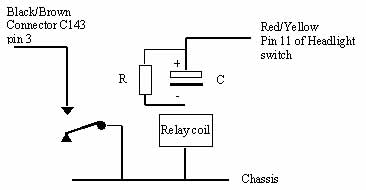
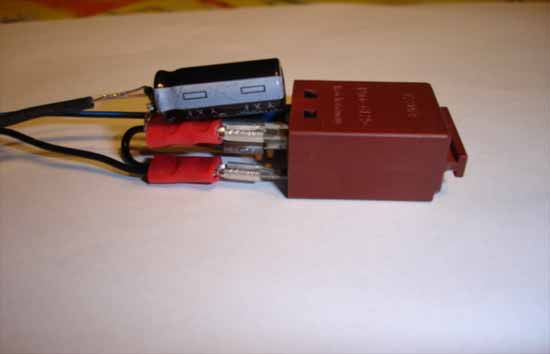
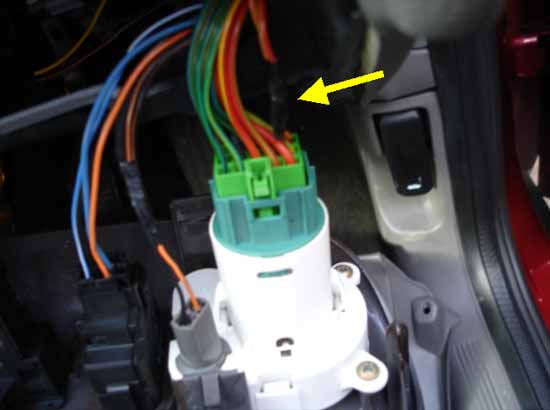
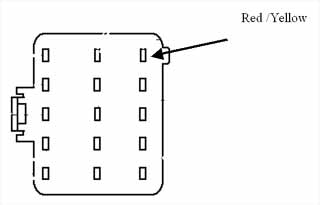
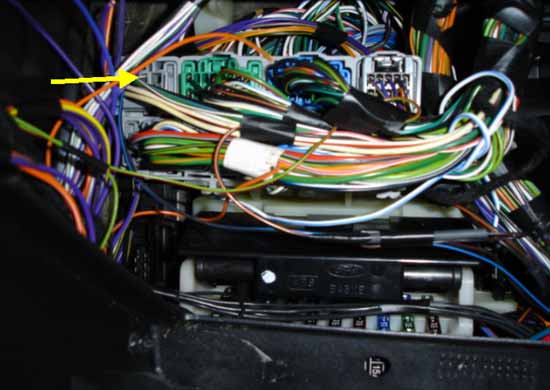
 Your Privacy Choices
Your Privacy Choices